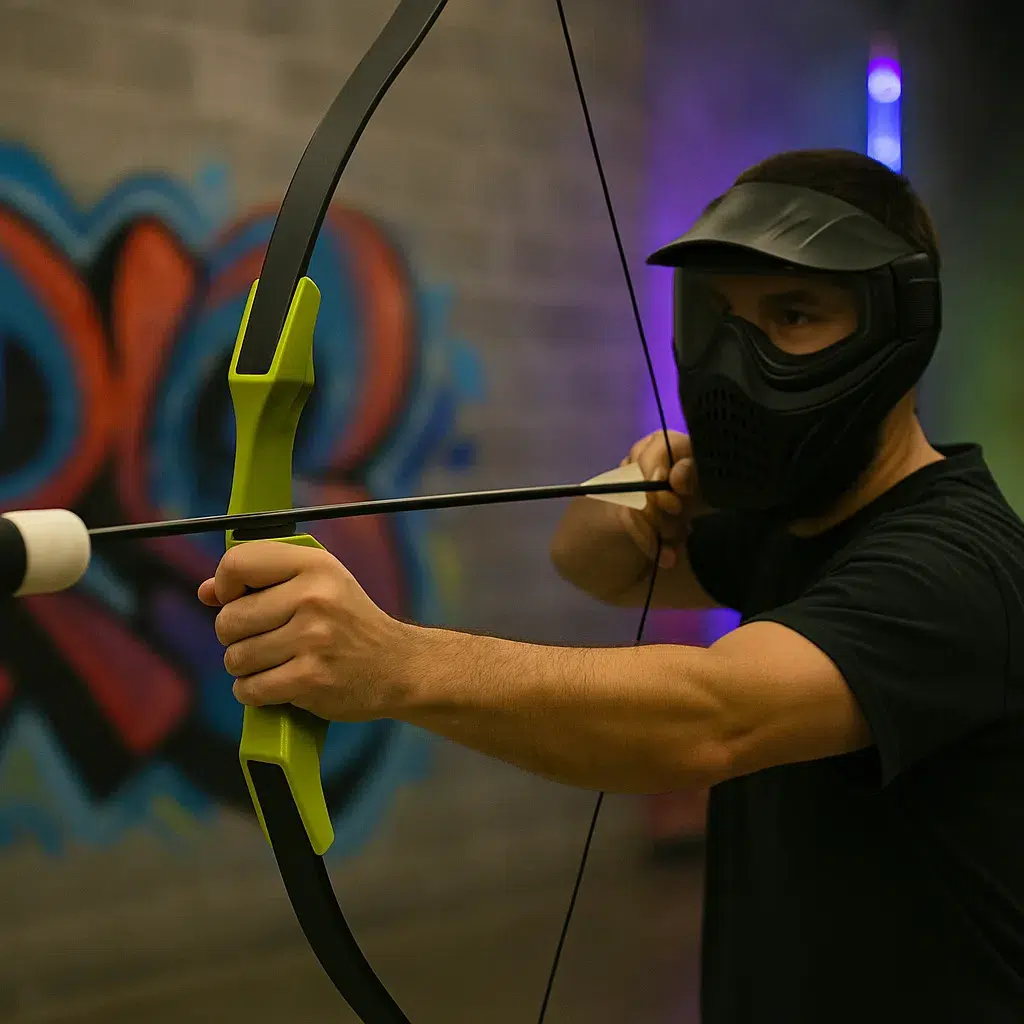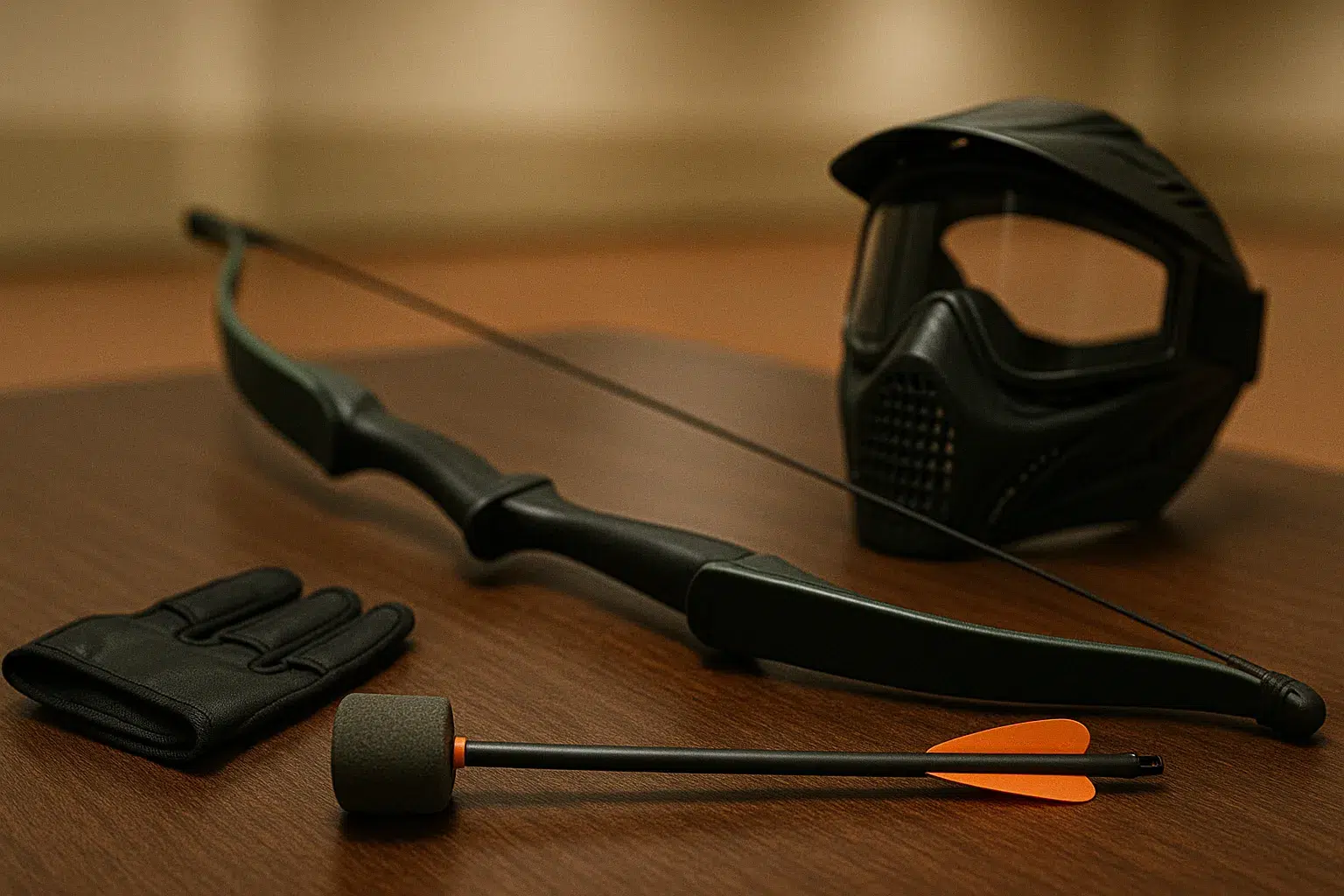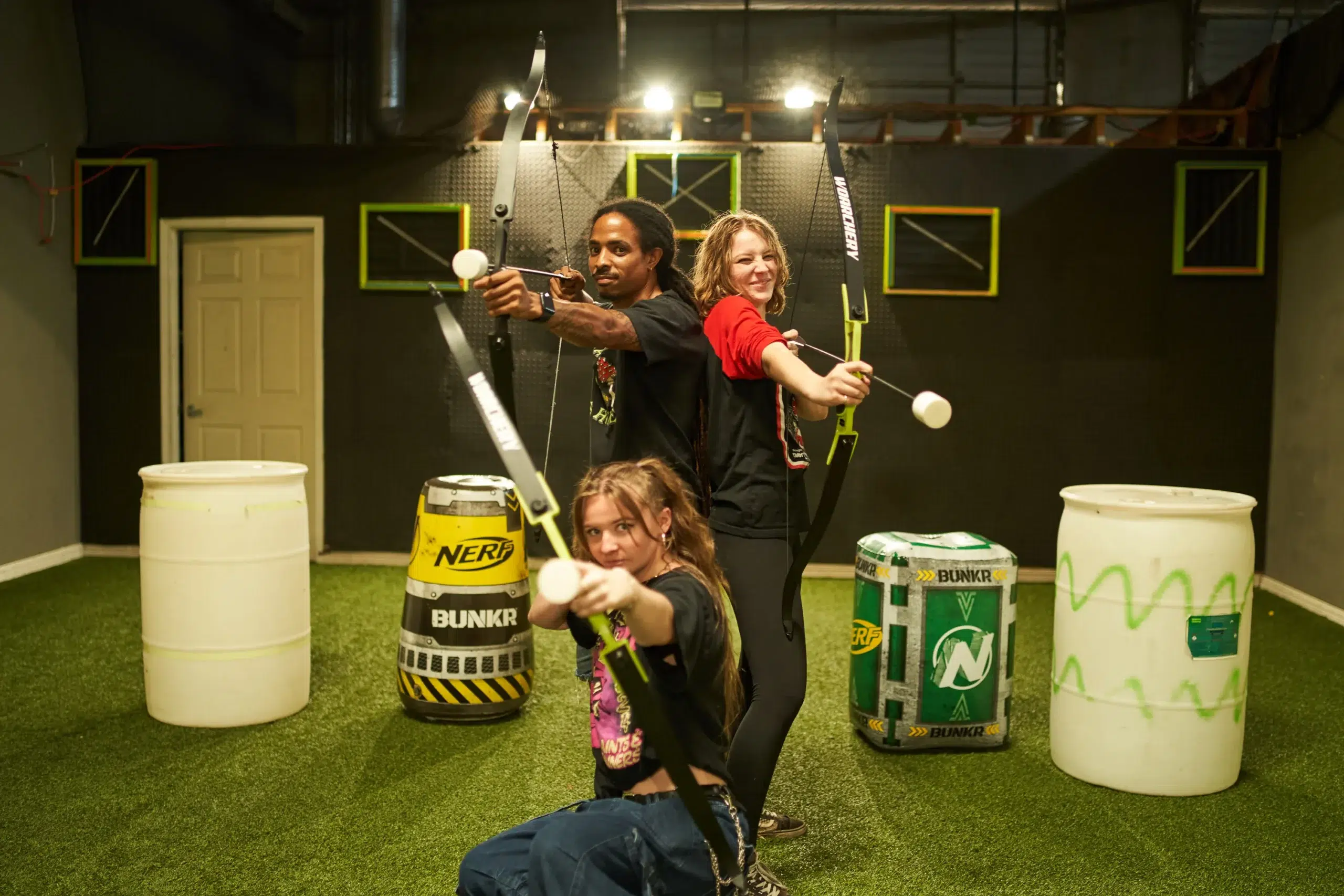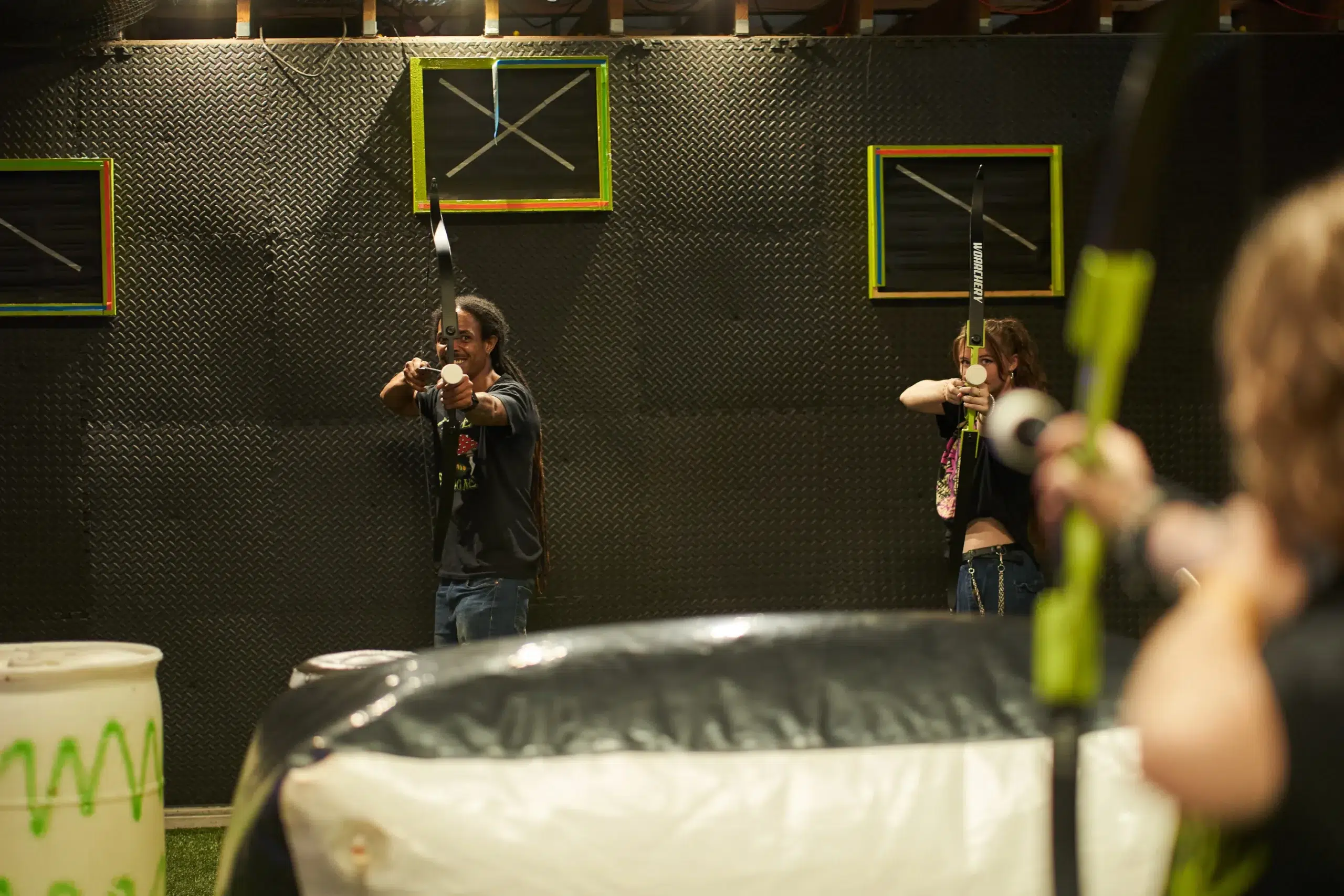Arrow Tag is a fast-paced activity that blends dodgeball with archery, making safety a top priority for both players and supervisors. This guide outlines key safety protocols to ensure an injury-free experience, covering essential measures like protective gear, equipment handling, play area boundaries, emergency procedures, and in-game supervision. It includes research-backed tips, real-world examples, and visual aids such as tables and lists to help participants understand their roles and minimize risks like misfired arrows or collisions. Whether you’re planning or joining a game, these protocols provide a clear roadmap for staying safe while enjoying the thrill of combat archery.
Key Takeaways
- Proper safety gear, like masks and vests, reduces risk without limiting movement.
- Regular equipment maintenance prevents accidents during intense gameplay.
- Clearly defined boundaries help manage space and player flow.
- Safety briefings and visual instructions reinforce essential rules.
- Active referee supervision keeps the game safe, fair, and fun.
Why Arrow Tag Safety Protocols Matter

Arrow Tag blends fast-paced fun with strategic movement, making safety a must for everyone involved. Without clear rules and protective measures, even foam arrows can lead to unintended injuries. Safety protocols create a predictable environment so players of all ages can enjoy the experience without worry. From proper gear to designated zones, these steps ensure every match stays fun, not frantic. Prioritizing safety keeps the energy high and the risks low.
Minimize Risks Without Killing the Fun
Arrow Tag is all about movement—ducking, dodging, and drawing your bow in fast bursts. But with fast-paced gameplay comes the need for real boundaries. Safety doesn’t mean slowing down—it means giving players the structure they need to go all out without fear. When everyone plays by the same set of rules and guidelines, the game becomes a safe zone for friendly competition, not collisions. Good safety measures are the secret to keeping the chaos exciting, not dangerous.
Build Confidence for New and Returning Players
A game like Arrow Tag can feel intimidating, especially for first-timers or younger players. Safety protocols provide a foundation of trust. When rules are clearly explained and consistently enforced, players feel more at ease and more willing to jump into the action. This results in smoother matches and better participation. Confidence comes not just from skill, but from knowing the play space is designed to keep you safe, no matter your experience level.
Ensure Fair Play Through Structure
Rules aren’t just about safety—they’re about fairness, too. Players can only compete evenly when boundaries are respected and enforced. Everyone benefits when a match isn’t ruined by a rogue arrow or unsafe maneuver. Proper safety standards ensure no one gains an unfair advantage through reckless behavior. Whether you’re dodging a shot or landing a clean tag, the game feels more rewarding when everyone is playing by the book.
Gear Up Right: Essential Protective Equipment

Wearing the right gear is the first line of defense in Arrow Tag. Protective masks, padded vests, and gloves reduce the impact of stray arrows and bumping into players or barriers. Each piece of equipment is designed with safety and mobility in mind, allowing players to move freely while staying protected. Having a consistent PPE policy keeps games safe and levels the playing field. At Brainy Actz, no one enters the arena without the essentials.
Why Face Masks Are Non-Negotiable
Your face—especially your eyes—needs the most protection during Arrow Tag. While the arrows are foam-tipped, they still fly fast and can sting on contact. Masks with durable visors and breathable padding prevent injuries without blocking your view. They’re lightweight enough for long rounds and snug enough to stay in place during quick moves. Think of your mask as your shield—comfortable, reliable, and a must-have every single time you step into the arena.
Add a Layer of Defense With Vests and Gloves
Padded vests absorb chest hits and allow players to move with confidence, while gloves protect hands from bowstrings and direct impacts. Combined, these pieces reduce the sting of close-range contact and make every dive or duck feel safer. It also levels the game so that no one’s holding back out of fear of getting hurt. These layers are light, flexible, and built to support the speed and action Arrow Tag delivers.
Check Your Gear Before the First Shot
Even the best gear needs a check-up before battle. Loose straps, cracked lenses, or damaged foam can reduce effectiveness and lead to unexpected injuries. A quick self-check—plus a teammate’s second look—goes a long way in keeping matches smooth. Staff should always inspect gear before matches, but players should stay alert too. If your equipment feels off or looks worn, say something before you’re mid-match.
Keep Equipment in Game-Ready Condition

Clean, functional gear keeps players safe and gameplay smooth. Regular maintenance prevents unexpected failures, like snapped bowstrings or loose arrowheads. Equipment should be inspected before and after each game, with damaged gear pulled from circulation immediately. This ensures consistent safety for every match. Maintenance isn’t just a background task—it’s part of the safety strategy.
Inspect Arrows and Bows for Damage
Before play begins, each bow and arrow should be checked for cracks, fraying, or missing tips. A compromised arrow can fly unpredictably, and a frayed bowstring can snap under pressure. These issues not only disrupt the game—they’re dangerous. Players and staff should treat this inspection as non-negotiable. Taking 60 seconds before the match to check your gear could be what keeps someone from getting hurt.
Organize Storage to Prevent Damage
When gear is crammed together or dumped into bins, damage builds up fast. Bows should be stored upright or carefully racked, while arrows need holders that protect foam tips from wear. Good storage habits don’t just preserve the equipment—they make setup and teardown quicker, too. Think of it as saving time and money while also making sure every player gets the safest gear possible each round.
Regular Cleaning = Better Grip and Vision
Sweaty gear can get slippery, foggy, or hard to use. Cleaning masks, gloves, and vests between rounds keeps everything functioning like new. It also supports hygiene for players—especially during long events with multiple matches. If a mask is fogged up or a glove is soaked, performance and safety both take a hit. Clean gear is safe gear, plain and simple.
Designated Game Zones Prevent Chaos

Structured game zones are essential to safe, exciting matches. Marked boundaries keep players in safe zones and out of restricted areas. They also reduce the risk of accidental collisions with walls, equipment, or other players. Well-marked areas create order within the chaos, ensuring that even high-speed games stay controlled. Players stay in the action—and out of danger.
Set Clear Boundaries With Visual Cues
Bright floor tape, cones, or flags show players exactly where they can and can’t go. These boundary markers are especially useful during intense moments when adrenaline is high and it’s easy to lose track. By clearly defining the limits, players stay focused on strategy rather than guessing where the wall ends. Boundaries also help referees call out-of-bounds plays more accurately, keeping matches fair and fun.
Stabilize Obstacles and Hide Zones
Arrow Tag is full of quick dives and cover maneuvers, but unstable props can cause slips or crashes. That’s why all barriers and hiding spots should be securely anchored and spaced for clear movement. Whether it’s a foam wall or an inflatable bunker, stability matters. Safe obstacles don’t interrupt gameplay—they fuel it. Players should feel confident using every element on the field.
Control the Number of Players on the Field
Too many people in a small space makes accidents more likely. Setting clear player limits per match helps avoid overcrowding and keeps the energy focused—not chaotic. Smaller teams also allow for more engaging gameplay, tighter communication, and better overall control. Arena staff manage this, but players should know why it matters—it’s about fun and safety working together.
Staff Oversight Makes the Game Safer

Referees and supervisors are your safety anchors. They’re responsible for ensuring that every match follows the rules and runs smoothly. Staff monitor gameplay, enforce gear requirements, and intervene if something gets out of hand. Their presence doesn’t slow the game down—it keeps it moving in the right direction. When staff are proactive, safety becomes second nature for everyone involved.
Begin With a Group Safety Briefing
Before the arrows fly, players gather for a short safety talk. These briefings explain how to use the gear, define the game area, and remind everyone of the rules. This isn’t just a box to check—it’s a critical moment to make sure everyone’s on the same page. Even experienced players benefit from quick reminders, especially when arenas or setups change between rounds.
Reinforce With Posters and Demos
Visual aids like wall posters, animated displays, or live demonstrations help safety messages sink in. These reinforce verbal instructions and give players visual reference points they can remember mid-game. For young players or non-native English speakers, this visual backup is especially helpful. The more ways we communicate safety, the more players stay aware and engaged.
Active Referees Make All the Difference
Staff who simply “watch” don’t cut it—referees need to stay engaged. Whether it’s blowing the whistle on unsafe play, calling a timeout to fix gear, or correcting someone who crossed a line, they’re part of the gameplay. When players know they’re being supported—not just observed—it boosts trust and accountability. Everyone plays harder and smarter when they know someone’s got their back.
Frequently Asked Questions
Is Arrow Tag safe for kids and beginners?
Yes! Arrow Tag is designed to be safe for all skill levels, especially when proper safety protocols are followed. Brainy Actz ensures everyone wears protective gear and receives clear instructions before the game starts.
What gear is required to play Arrow Tag safely?
Each player must wear a protective face mask, padded vest, and gloves. These pieces protect against impact and help reduce injuries from accidental contact or stray arrows during gameplay.
How are safety rules communicated before matches?
Safety rules are explained during a pre-game briefing with additional support from visual aids like posters and videos. Referees are also present throughout the match to guide and monitor players.
What happens if a player’s gear is damaged mid-game?
If equipment is compromised during a match, the player is pulled from play until their gear is fixed or replaced. Safety checks are also done before every round to prevent this from happening mid-game.
Can I still play if I’ve never tried archery before?
Absolutely! No archery experience is needed to enjoy Arrow Tag. Staff provide a quick tutorial before the match and stay close by to help. The foam-tipped arrows are safe and beginner-friendly.
Conclusion
Arrow Tag delivers high-energy fun—but only when supported by strong, easy-to-follow safety protocols. Protective gear, clear boundaries, regular equipment checks, and engaged referees work together to create an environment that’s as safe as it is exciting. These steps don’t restrict the game—they make it better by helping players move with confidence and focus fully on the action.
At Brainy Actz, every match is designed to be memorable for the right reasons. By making safety part of the game culture, participants of all ages can enjoy Arrow Tag to the fullest without unnecessary risks. So, whether you’re suiting up for the first time or leading your squad into battle, remember: safety isn’t the opposite of fun—it’s the foundation of it.

